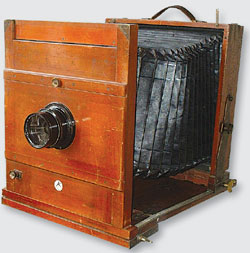 The darbar squares and temples of the Valley aren't our only architectural touchstones. At the turn of the last century, the city was already undergoing the changes that determine its present appearance.
The darbar squares and temples of the Valley aren't our only architectural touchstones. At the turn of the last century, the city was already undergoing the changes that determine its present appearance.
The 1934 earthquake destroyed the city and created some of the new contours that we see today. The commercial and administrative hub of the city shifted to the area around Tundikhel: New Road, Putalisadak, Singha Darbar. These photographs Dirgha Man Chitrakar and his son Ganesh Man Chitrakar took from 1901-1945 show a modern city in the making.
Dirgha Man accompanied Prime Minister Chandra Shumshere to England in 1908 as royal court photographer and painter. He took life-size portraits of Rana families, and a series of wide angle shots of Kathmandu's cityscape. He used an American RB Graflex with a 165mm f/25Anastigmat lens, an English Camper with lens and accessories from Altrincham's and a Hugo Meyer German lens. Ganesh Man, who took the first aerial photographs of the Valley, used a Rolleiflex/ Rolleicord Rollei and a Zeiss Ikonta M Prontor SV.
The copyright to the images is with Dirgha Man's grandson, Kiran Man, who owns the Ganesh Photo Lab where many of these old glass negatives are archived.
Ganesh Photo Lab:www.nepalhomepage.com/ganeshphoto, 4260898.

|
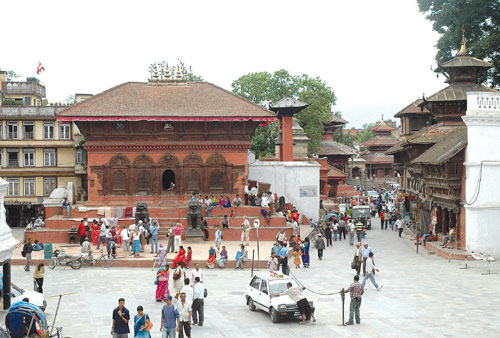
KIRAN PANDAY
|
Someone to watch over us: Take away contemporary clothing, the taxi, tourists, railings, and Basantapur seen from the Shiva-Parbati temple looks gratifyingly similar to how it did in the early 1940s when Ganesh Man Chitrakar photographed the square. The old building in the left corner is missing, but today's stone pavement is an improvement.

|

KIRAN PANDAY
|
In dreams: This photograph of Kaiser Mahal was taken in approximately 1915 by Dirgha Man Chitrakar. It showcases the old world beauty of Field Marshall Kaiser Shumshere's much loved garden. Alongside is the newly renovated Garden of Dreams. .
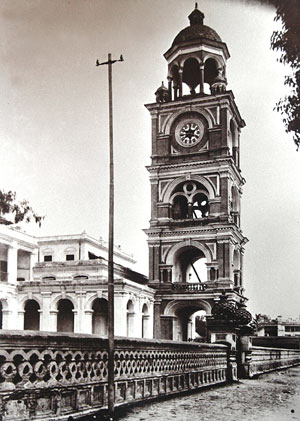
|
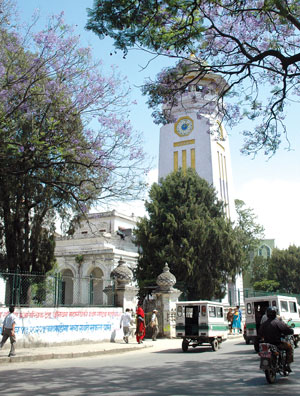
KIRAN PANDAY
|
Time passes: The old Ghantaghar with its Moghul-Victorian masonry stood proudly next to an ultramodern electricity pole in this 1915 photograph by Dirgha Man. Nepal was one of the first Asian countries to generate electricity in 1903 with the Pharping power station. This tower came down in a heap of rubble in the 1934 quake and was rebuilt it its present shape and the poltiical grafitti matching the jacarandas in full bloom.
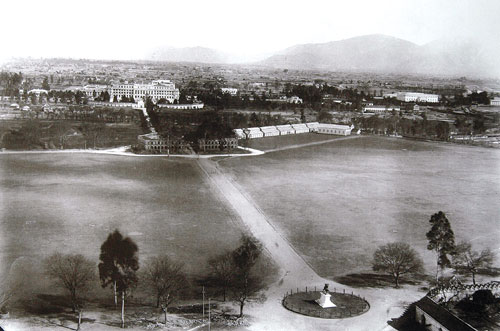
| 
KIRAN CHITRAKAR
|
A bird's eye view: In 1910, when Dirgha Man took this picture from Dharara, Tundikhel looked almost barren with just a solitary statue watching over it. Ninety-six years later, his grandson Kiran Chitrakar re-enacted the scene from the top of the tower and printed his photograph in sepia to give the same texture and mood.
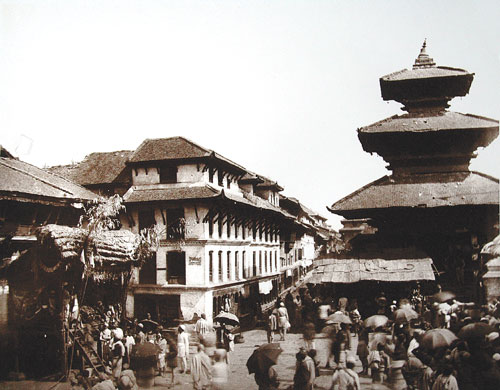
|
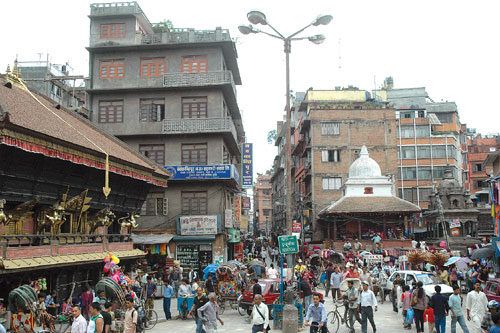
KIRAN PANDAY
|
Still abuzz: On this scorching day in 1920, Dirgha Man climbed to the roof of a nearby building and captured the spiritual and commercial transactions that made Indrachok the nerve centre of old Kathmandu. To shoot the scene today, with the renovated Akash Bhairab temple and electricity pole and the unimpressive brick and concrete box that has replaced the high temple on the right, you have to clamber atop a car in the thick of traffic.

|
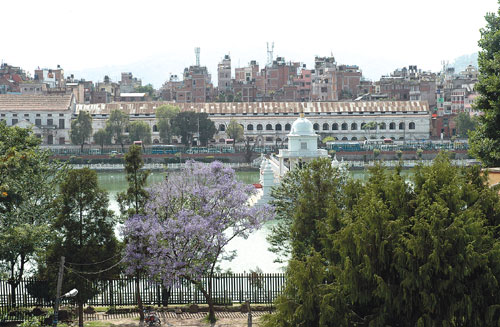
KIRAN PANDAY
|
The long view: This shot of Ranipokhari with the Darbar High School behind it was taken in 1918 by Dirgha Man. Today, from the balcony of Ghantaghar, the temple is still set against a distant backdrop of hills, but the vista is marred by the high concrete matchboxes of Asan.
 The darbar squares and temples of the Valley aren't our only architectural touchstones. At the turn of the last century, the city was already undergoing the changes that determine its present appearance.
The darbar squares and temples of the Valley aren't our only architectural touchstones. At the turn of the last century, the city was already undergoing the changes that determine its present appearance. 













